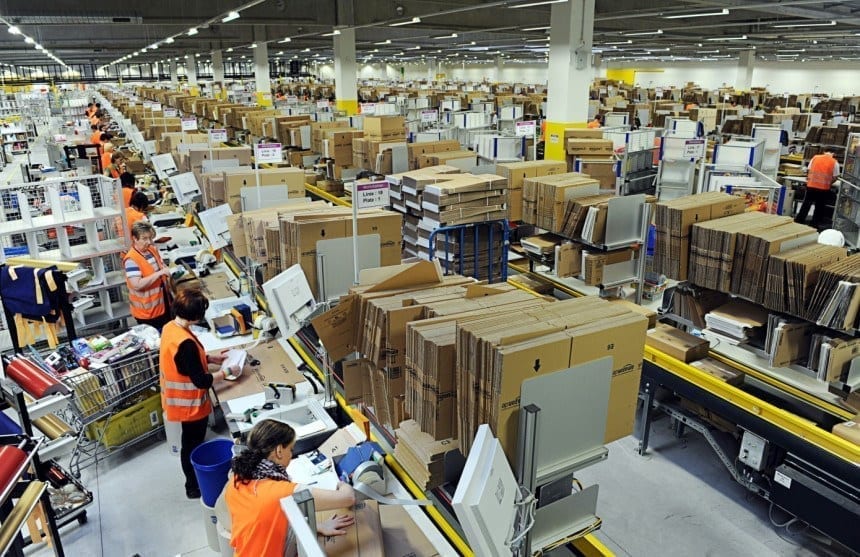Amazon workers in California are suing over break period and overtime violations, but will this delay the inevitable race to the bottom for worker rights?
Amazon is booming! Fast becoming the world’s go-to source for everything from thousand dollar wheels of cheese to books about reusing cat hair, the online retailer is poised to capture nearly half of every dollar spent online in the United States this year. Amazon’s long term strategy isn’t merely to provide tchotchkes, but to weasel its way into being our only source for goods, and so trusted that we’re willing to let them inside our homes unattended. To accomplish market mastery, however, they must also change us. A would-be retail monopoly doesn’t only need shoppers, they also need staff. As hundreds of cities compete to host Amazon’s second headquarters, Amazon plans to woo 120,000 seasonal employees to help fill demand. But do these Amazon workers know what they’re in for?
It’s no secret that working at Amazon is brutal. Testaments to the harsh environment surface regularly in the media. Pieces like I was a Warehouse Wage Slave (2012) and The Life and Death of an Amazon Warehouse Temp (2015) make it clear that not much has changed for Amazon workers in the intervening years. The hits just keep on coming. Thousands of Amazon workers in Europe went on strike this Black Friday to protest low wages. Here in the States, Amazon’s Sacramento warehouse is the subject of a class action suit by employees who allege that they’ve been denied statutory rest periods and overtime pay.
It might not seem like such a big deal whether the time spent walking to designated break areas counts as part of your break or not. When you’re working so hard for such long hours that it’s hard to avoid falling asleep standing up, it becomes a big deal. In this case, state law provides a 10 minute break every for four hours of work, as well as a half hour unpaid lunch break per five-hour shift. Employees are entitled to rest for the entire allotted time. In those giant Amazon warehouses, though, like the 855,000 square foot Sacramento fulfillment center, even a fifteen minute break doesn’t go very far if you have to spend half of it walking to the break room and the other half of it walking back to your station, as Amazon workers there allege. No wonder their employees are falling over. (Amazon keeps ambulances on hand for this very problem.)
With Amazon’s data-driven shot at perfecting the principles of scientific management that Frederick Winslow Taylor put forth over a century ago, they are joining Wal*Mart in a race to the bottom for humane working conditions. As Amazon workers go, there go we all.
Are Amazon Warehouse Employees The Most Important American Workers? Posted by Wochit Business.
Meanwhile, Amazon, like Wal*Mart, is figuring out how to squeeze a brutal profit out of all sides of the business. By seeking out Indian vendors, for example, they’re taking advantage of cost arbitrage and eliminating the middleman. (This seems great until you think about how many of us are middlemen.) Amazon also takes advantage of a highly mobile part time workforce in the form of retirees living out of campers. If Amazon succeeds in its goal to become the only, or even the largest, source of retail goods, is that really a win for consumers, most of whom need decent-paying jobs to be able to afford to buy goods?
It’s been said that while slaveholders were obliged to care for the health and safety of their human investments, low-wage employers are under no such obligation. As automation continues to make human workers irrelevant (except, of course, as ineffective consumers), more and more people will be competing for fewer jobs, and massive players like Amazon and Wal*Mart will turn desperation and pain into upward-siphoned cash. If this isn’t the world we want, I suggest we do something to change our ominous path. On the other hand, that might mean living without poop slippers.
Related: Targets Strike Back at Amazon Invaders


Join the conversation!